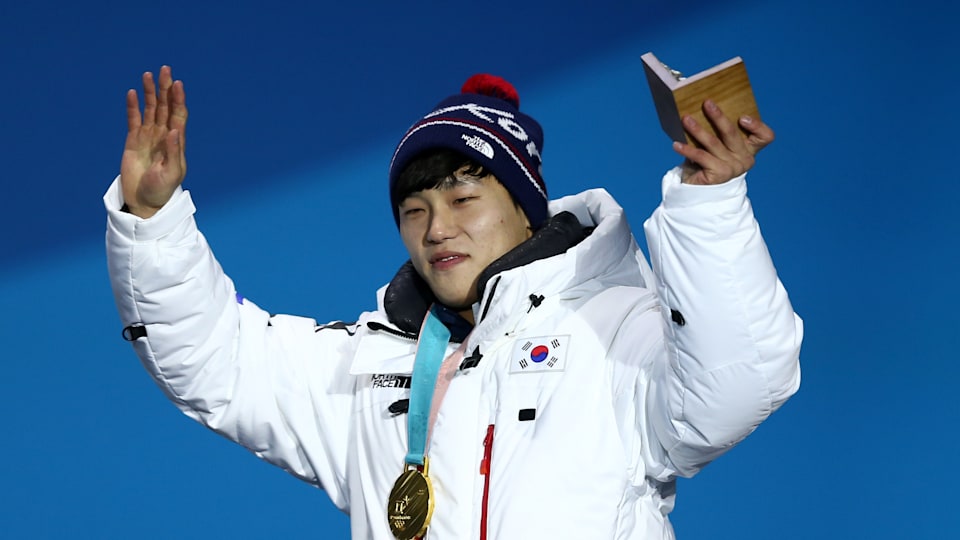
In a little bit over three months, Gangwon 2024 will become the first non-European host of a Winter Youth Olympic Games [YOG].
Following on from the success of the PyeongChang 2018 Winter Olympics, the province of Gangwon (which encompasses PyeongChang) will also become a dual Winter Olympic and Winter YOG location.
As such, several venues from PyeongChang 2018 will be repurposed for Gangwon 2024, meaning that there will be an exciting blend of old and new for this Winter YOG.
Here, we take a trip down memory lane from the 2018 Winter Olympics, and look at how its legacy will be felt at Gangwon 2024.
Memories of PyeongChang 2018
Four years ago, PyeongChang 2018 delivered an outstanding Winter Olympics, leaving a plethora of moments that will live long in the memory.
It all started with the Opening Ceremony, where the crowd saved their loudest cheer for the entrance of hosts South Korea with their North Korean counterparts, marching as one behind the Korean Unification Flag.
The two nations also came together to field a joint women's ice hockey team, which played its first game the following day.
Who can forget when USA snowboard legend Shaun White made his return, throwing down back-to-back 1440’s, a double McTwist and a frontside 1260 on his way to the top of the podium?
How about ‘Iron Man’ Yun Sung-bin, who won South Korea’s first ever Winter Olympic gold medal in sliding and became an overnight hero at home?
Then there was White’s superlative compatriot Chloe Kim who won her first Olympic halfpipe gold at just 17 years of age.
Czech snowboarder Ester Ledecka made history by winning alpine skiing and snowboarding Olympic gold at the same Games, while alpine skier Mikaela Shiffrin sealed her first Olympic title.
PyeongChang 2018 was also about non-traditional Winter Olympics nations, and Mexican cross-country skier German Madrazo being embraced at the finish line by Colombia's Sebastian Uprimny, Morocco's Samir Azzimani, Kequyen Lam of Portugal, and Tonga's topless flagbearer Pita Taufatofua was a poignant moment.
It was also a Games of redemption.
Lindsey Vonn battled back from injury to claim bronze in the downhill, while Canadian snowboarder Mark McMorris won slopestyle bronze less than a year after suffering near-fatal injuries in a crash.
PyeongChang 2018’s positive environmental legacy
The PyeongChang 2018 Organising Committee ensured that the Games would create a positive environmental impact through investing in infrastructure that is now reducing greenhouse gas emissions.
The high-speed train line that connects the capital city Seoul to the Alpensia mountain region and Gangneung coastal areas will be used extensively at Gangwon 2024, and greatly reduces the amount of vehicles on the road.
Finally, a wind farm built ahead of the Games that provided 104% of the consolidated energy needed to run PyeongChang 2018, continues to produce renewable energy for the region.
Gangwon 2024: Repurposed Venues
PyeongChang 2018 left a priceless legacy that was felt at home and abroad.
Improved facilities and the establishment of new sports clubs meant that there was a significant increase in South Koreans taking part in winter sports in the run up to the 2018 Winter Olympics, as per the Legacy Report.
Meanwhile, the PyeongChang 2018 Legacy Foundation developed the “New Horizons Sliding Champions” programme, which trains athletes from non-winter sports countries in sliding sports.
Much of the existing infrastructure is being repurposed for competitions at Gangwon 2024; several outdoor mountain events will take place at the Alpensia Sports Park in PyeongChang, while the indoor ice events will take place in Gangneung.
The stage is set and more spectacular moments are awaiting. Just one year to go!
